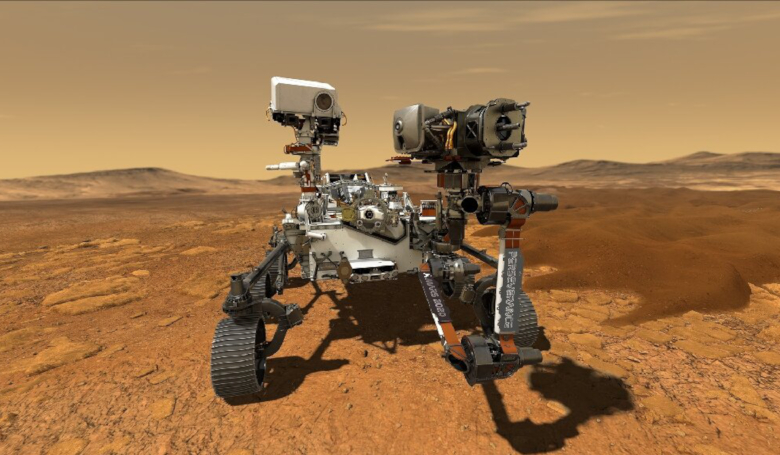NASA on Monday gave its latest Mars rover Perseverance the all clear to launch later this week on a mission to seek out signs of ancient microbial life.
"The launch readiness review is complete, and we are indeed go for launch," administrator Jim Bridenstine said.
"We are in extraordinary times right now with the coronavirus pandemic, and yet we have in fact persevered and we have protected this mission because it is so important."
The launch will take place at 7:50 am EDT (11:50 GMT) on Thursday from Cape Canaveral, Florida, on board a United Launch Alliance Atlas V rocket. Live coverage will take place on YouTube and across social media platforms.
Following a seven-month journey, Perseverance is set to land at Jezero Crater on 18 February, 2021.
The six-wheeled robot, which is about the size of an SUV and weighs 1,040 kilograms (2,300 pounds) is NASA's fifth Mars rover and its most advanced to date.
It comes equipped with a small helicopter called Ingenuity that will attempt to fly – a first on another planet – as well as a robotic arm, and an array of cameras and a pair of microphones.
To look for evidence of ancient fossilized bacteria, it will use two lasers and an X-ray capable of chemical analysis. It will also gather rock and soil samples for a future mission that will bring them back to Earth for further study. This is crucial for establishing whether any organic compounds it obtained really came as a result of living processes.
Perseverance will build on previous orbital and landed missions, which established that the dry, cold Mars we see today was much warmer and wetter billions of years ago. These environments lasted long enough to possibly support the development of microbial life.
With Thursday's launch, the United States will become the third nation to embark on a mission to the Red Planet this month.
China launched its mission to Mars last week named Tianwen-1 ("Questions to Heaven").
If China's mission succeeds, it will become only the second nation after the United States to have a rover on another planet – though it has previously placed two rovers on the Moon.
The United Arab Emirates also launched an orbital probe from Japan earlier this month called "Al-Amal" (Hope), the Arab world's first mission to Mars.











